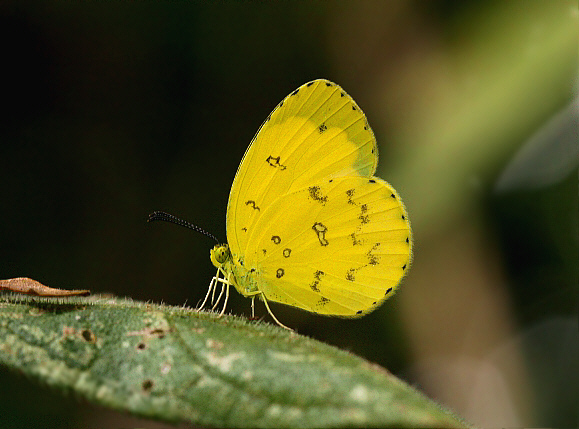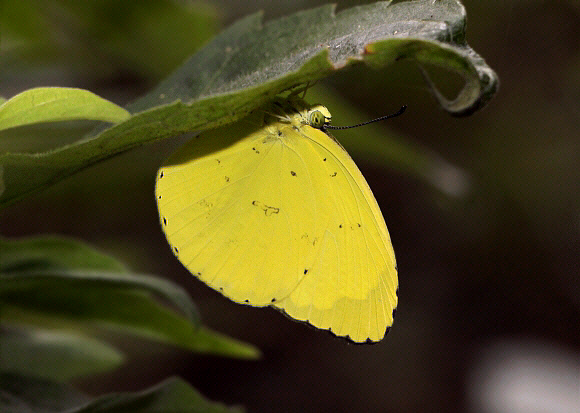
Introduction
The Grass Yellows are all fairly small butterflies, readily recognised by their bright yellow wings and their habit of gathering in small groups on patches of damp sand or soil. Despite their name, none of their caterpillars feed on grasses – the name is derived from the fact that most species are found in disturbed grassy habitats.
Eurema are among the most familiar of tropical butterflies. There are 70 known species worldwide, of which 36 are found in the Neotropical region, 13 in North America, 10 in Africa, 25 in the Oriental region and 10 in Australia / Papua New Guinea. Many are migratory in behaviour and the ranges of several such as hecabe overlap into in 2 or more of the zoogeographical regions.
Eurema hecabe is found across the entire African continent, throughout most of Asia south of the Himalayas, on most of the islands of the south Pacific, and across much of Australia.
Habitats
This species is highly migratory in behaviour and consequently can be encountered in almost any habitat. It breeds mainly in open or disturbed habitats including forest clearings, along roadsides and riverbanks, and in parks and gardens. It can be found from sea level and about 1000 metres.

Lifecycle
The spindle-shaped eggs are straw coloured when first laid, but turn darker before hatching. They are laid singly on the upper surface of leaves of the foodplants. The pabulum varies according to the region and habitat and includes Caesalpinia, Cassia, ( Caesalpiniaceae ), Wagatea ( Fabaceae ) and Pithecellobium ( Mimosaceae ).
The caterpillars when first hatched are green, cylindrical, and covered in tiny tubercules from each of which arises a single long stiff hair. In later instars these hairs become progressively shorter. The fully grown larva is dull green with a thin dark dorsal stripe. There is a broader cream lateral stripe below the spiracles. Each segment of the body is ribbed vertically, and covered in small tubercules, giving it a rough textured appearance.
The pale green chrysalis is slim, sharply pointed at head and tail, and with prominent wing cases.
Adult behaviour
Males congregate to imbibe mineralised moisture from damp sandbanks, often in scores. Females are more discreet in behaviour, normally being seen singly when nectaring. They will visit many different flowers including Lantana and various Asteraceae.
